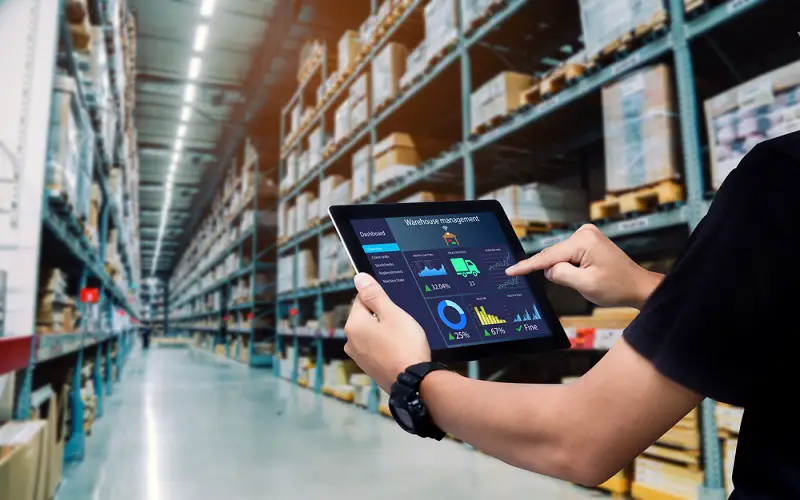To run a successful third-party logistics (3PL) company, you must satisfy your clients by fulfilling their orders as efficiently as possible. Besides that, you need to be more accurate and faster from the start of taking orders to the final part of shipments. However, as a 3PL service provider, you deal with numerous customers with unique needs and requirements. Because of these requirements, you’ll need 3PL warehouse management systems (WMS).
WMS is software that enables you to optimize all your warehouse processes. It records all the goods and materials that enter and exit your warehouse. Moreover, it speeds up the order fulfillment process and tracks what’s selling well. Ideally, when a client makes an order, the WMS confirms if the product is available immediately. This is much faster than having a worker cross-check the order against the stock. With that in mind, here’s what you need to know about 3PL WMS:
Benefits of using 3PL WMS
3PL WMS offers you many benefits with your clients regardless of your industry. Some of the benefits include the following:
- Easy inventory tracking: With 3PL WMS, you can have a real-time inventory report. Additionally, you can track inventory levels and delivery status smoothly. Doing so ensures you never run out of stock and enables you to inform your clients when they should expect their orders.
- Scalability: After some time, your business will expand, and you may need to add new stock or a different warehouse. You may need to add more employees and update your software. Fortunately, 3PL WMS adapts to the growth of your business and can meet all your current needs without compromising accuracy and effectiveness.
- Improves billing: Billing is an essential process in any business. You may approach it manually, especially when your business is still tiny. But as your company grows, billing can be complicated as the volume of your transactions increases. It can also be time-consuming and prone to errors. The good thing is that with WMS, you can eliminate these errors and save time as it makes billing quicker and improves accuracy.
Features of the best 3PL WMS

It’s always good to have software that meets your needs. For this reason, you’d want to develop a list of features from your warehouse management system requirements. This list will assist you in making enlightened decisions on the kind of software to choose. That said, here are the top features of the best WMS for 3PL:
- Integration: If you plan on integrating your WMS with current systems, it’d be wise to choose compatible software. This ensures that the WMS works in unison to ensure the continuity of your business.
- Improved track and trace: You’d probably want a system that enables you to trace where customers’ goods are and give them authentic delivery reports.
- Enhanced billing and reports: A system that supports various invoice formats and unique billing items is vital. Regarding reports, you need a robust system that can give you real-time data on your business logistics.
- Visibility: The ideal 3PL WPS should enable you to view stock and orders seamlessly and introduce user and security permissions without hassle.
Types of WMS
There are various types of warehouse management systems to choose from to best suit your business requirements. Here are the most common systems many 3PL businesses use:
- Standalone Systems
This type of WMS is best suited for smaller warehouses with lower software budgets. It has restricted features that these businesses can only integrate with an existing supply chain operation. However, you can’t use standalone systems alongside a new system. Therefore, consider other more robust systems if your objective is to expand your 3PL business and use more technology. The good thing about it is that it comes with inventory management and warehouse operations which are essential management systems.
- Supply chain modules
Supply chain modules are much broader in scope. In addition to ensuring the fulfillment of the primary warehouse management duties, they can also manage other tasks like:
- transportation management,
- bettering customer relationships,
- vendor handling,
- enhanced user interface, and
- customer service abilities.
- ERP modules
ERP modules are a system that tracks all of your business’s resources. It’s a fit for organizations planning to expand their operations. ERP systems manage finance and accounting, customer relationships, human resource, sales and marketing, and invoicing. When you integrate everything into one system, tracking your inventory becomes easy, and you can seamlessly identify the goods to invest in.
- Cloud-Based systems
These types of WMS use cloud technology. It’s known for its fast integration, scalability, and convenience. Besides that, it’s highly scalable and user-friendly with increased security. This allows you to integrate your duties in a seamless format.
Conclusion
Running your 3PL company with WMS improves your warehouse shipping processes. With this system, you can handle the complex nature of warehouse operations swiftly and seamlessly. Also, you eliminate billing and inventory errors, thus improving your accuracy. This way, you meet your client’s expectations, hence satisfying them. This eventually boosts your brand’s reputation, attracting more customers and allowing you to make more profits.
References
Dakić, Maja. “Key Benefits of Warehouse Management System (WMS)” in DataDrivenInvestor. Medium, January 11, 2022. https://medium.datadriveninvestor.com/key-benefits-of-warehouse-management-system-wms-d788f7c73d6.
Rittenberg, Julia and Rob Watts. “What Is Warehouse Management System (WMS)?” Forbes, February 8, 2022. https://www.forbes.com/advisor/business/software/what-is-wms/.
The Investopedia Team. “Enterprise Resource Planning (ERP)” reviewed by Somer Anderson. Investopedia, July 12, 2022. https://www.investopedia.com/terms/e/erp.asp.

